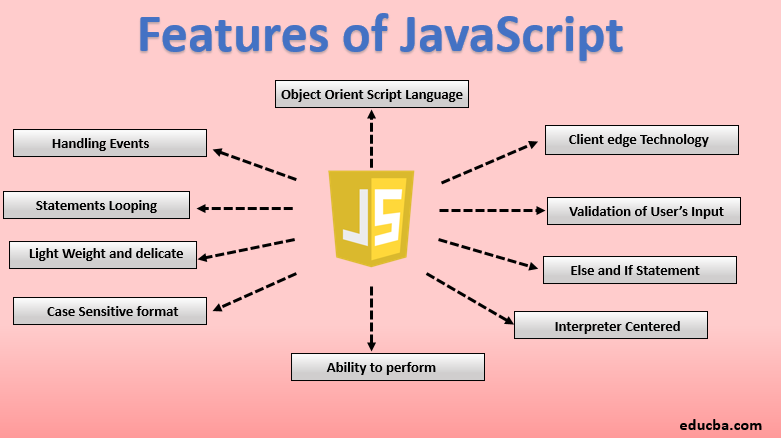Javascript applications and features
JavaScript is a language that has rapidly gained popularity. For almost 10 years now, it has been growing steadily and, according to a survey of developers on StackOverflow, in 2013 it became the most popular technology in the world, displacing Java from the first place. Since then, JavaScript has only grown its lead. According to the TIOBE index as of February 2018, it ranks eighth in popularity and has been in the top ten most demanded technologies for many years.
JS frameworks from javascript company are obviously at their peak as well. The top two on StackOverflow rankings for 2017 are Node.js and AngularJS. React is in fourth place behind .NET Core, but developers cite it as their favorite technology to work with.

Mobile applications
JavaScript has caught on well in the mobile development environment as well. The market share of mashups, where JavaScript runs in a lightweight browser (WebView), has been growing over the past two years.
These tendencies have a simple explanation. With a hybrid approach, by writing the code once, you can get an application that works stably on most popular platforms (iOS, Android). Although some improvements will still be required, this approach is more versatile than developing native applications for different platforms.
The main benefit of React Native for building mobile apps is that a developer doesn’t have to write two separate apps in different languages. The same code base can be used for both systems. At the same time, the framework even adjusts the graphical elements to the platform.
In addition, a simple mobile application can often be developed faster with React than with the native language of the platform. And most programmers facing web development will be able to easily grasp React Native since it’s still JavaScript.
On the other hand, using the languages native to iOS or Android also has its advantages. The native development environment has direct access to all APIs and platform functionality without additional restrictions or dependencies. Android Studio or xCode also allows many third party libraries to be used, and all available languages are strongly typed, resulting in fewer bugs. Finally, in the long run, it’s better to use your native language and development environment.
Where to start programming: JS and other languages
JavaScript is a dynamically typed language, which makes it easy to learn: you can quickly create an application from scratch, at the initial stages it is intuitive and does not set hard rules.
Dynamic languages are usually high-level, so you don’t waste time fixing details in your code and focus on learning programming concepts.
The disadvantages of JavaScript are in the same plane as the advantages. As noted, this language is loosely typed and leaves much more room for errors that can only be detected by running the program. The solution to this problem can be TypeScript, developed by Microsoft. This scripting language is strongly typed, but at the same time it compiles to the same JavaScript.
In ease of learning, other dynamic languages can compete with JavaScript with https://fireart.studio/custom-react-js-development-company/. First of all, this concerns Python. It has a simple syntax, a large set of libraries and quickly allows you to get involved in software development. It is used to develop desktop and web applications (via the Django framework). In addition, it is the most popular language used for introductory courses by the largest universities in the United States.
Another competitor to JavaScript as the first language is Ruby. It is also a general use high-level language. Its simplicity can be seen most clearly from the code of the “Hello, world!” Program, which displays a similar inscription on the screen. For Ruby, the code takes one line.
Cover Image from Unsplash












![Ways to Prospect More Effectively [Infographic]](https://technofaq.org/wp-content/uploads/2017/04/Ways-To-Prospect-More-Effectively-Infographic-150x150.png)




